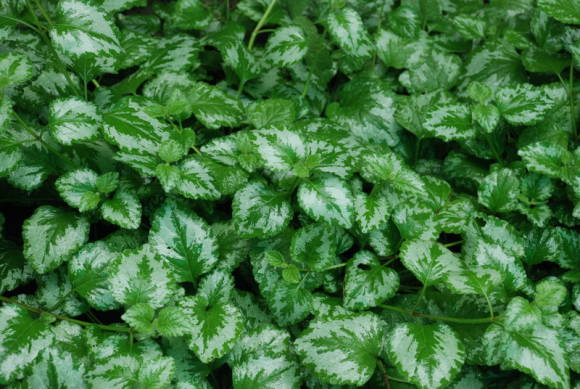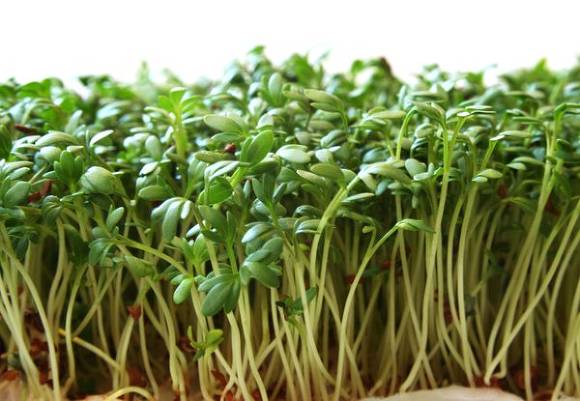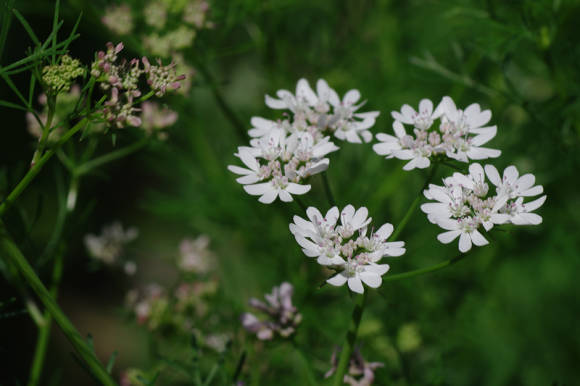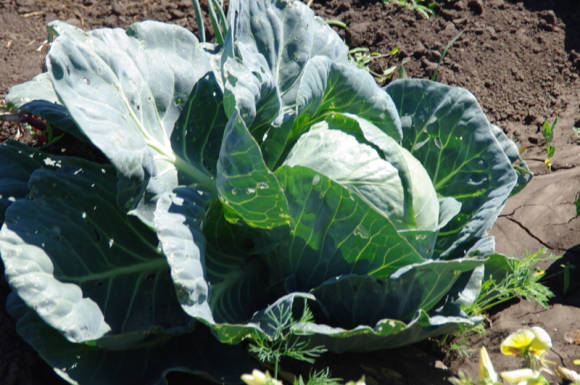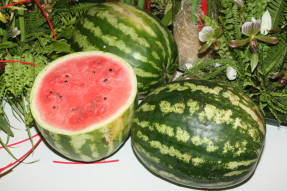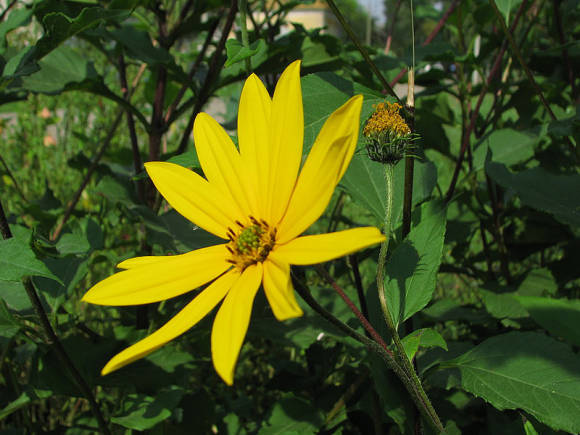In late autumn, when the harvest season for most vegetables and fruits comes to an end, it is just beginning for feijoa.
The well-known fragrant feijoa berries are known by botanists as Akka Sellova. (Acca sellowiana), genus Akka (Acca), Myrtle family (Myrtaceae).

Feijoa culture history
This plant was discovered by the botanist Otto Karl Berg (1815-1866) at the end of the 19th century in Brazil. The homeland of feijoa is the subtropics of South America, where the plant is found as a shrub in the forests of Brazil, northern Argentina, Uruguay, Paraguay and Colombia.
The familiar name Feijoa was given by its discoverer in honor of the Portuguese naturalist and botanist João da Silva Feijo (1760-1824), and the specific name sellowiana - in honor of the German naturalist Friedrich Zello (1789-1831), who studied the flora of Brazil. Berg, in the botanical (binary) nomenclature, singled out feijoa into an independent genus, assigning the name Feijoa sellowiana to the familiar fruit. The genus turned out to be small: only three species, of which only one is cultivated.
Europeans first got acquainted with feijoa in 1890, when the plant was brought to France, from where it was discharged to Russia in 1900, in 1901 the feijoa got to California, in 1910 - to Italy, from where it spread across the Mediterranean.
Feijoa is now widespread on the Pacific coast, in the Mediterranean, as well as in Australia and North Africa. Within the borders of the former CIS, feijoa has taken root well on the Black Sea coast and adjacent territories: in the Crimea, Georgia, Abkhazia, Azerbaijan, as well as in Uzbekistan, Turkmenistan, Krasnodar Territory.
The area of distribution of feijoa continues to successfully expand towards northern latitudes due to its ability to tolerate a short-term drop in temperature to -12 ° C.
Feijoa grows in the form of an evergreen spreading shrub or a short tree about 3 m high.Existence in the form of a tree and a shrub is explained by the fact that feijoa gives root shoots, which in nature forms a shrub, during cultivation it is regularly removed to form a tree.

Despite the recent acquaintance with feijoa, the history of the plant has already become a legend. Once a young man fell in love with a sea princess, but the father of his beloved agreed to marry his daughter with one condition: the young must live in the sea. The young man got married, but longing for his homeland and land did not let him go. He decided to run away, but the vigilant father-in-law found him going out on land and turned him into a bush, the fruits of which bear the scent of the sea breeze and the taste of unfulfilled hopes, and the flowers - the beauty of love.
A plant with a docile nature
Feijoa is a docile and patient plant. It is photophilous, but can tolerate shade, grows on poor, sandy and rocky soils, but gratefully takes advantage of fertile soils. It is moisture-loving, but at the same time drought-resistant, thermophilic, but capable of withstanding a short-term drop in temperature to -12˚С. The following conditions are optimal for its development: temperature not lower than + 9 ... + 10˚С in winter and not higher than + 33˚С in summer, annual precipitation - 760-1016 mm and soil pH 6.2.
Scientists of the Nikitsky Botanical Garden noted that with a short-term decrease in temperature to -10˚С, feijoa partially sheds its leaves, at -13 ... -15˚С - complete shedding occurs. Leaves regenerate in spring within 30-40 days. In terms of frost resistance, feijoa significantly surpasses citrus fruits and grows well where olive, tea, laurel are zoned. By the way, the most fragrant fruits ripen in relatively cool regions.
Feijoa propagates by seeds, cuttings and cuttings, while the percentage of rooting of cuttings is very low. The trees are densely branched, with a spreading crown, so that when planting, a distance of at least 2 m is left between the seedlings, taking into account the growth of the crown up to 3 m. Seedlings growing in thickened conditions develop a bole in the second year.Feijoa does not require shaping pruning, only the diseased and damaged shoots are removed during the winter, the root shoots are cut out. Shoots grow most intensively in young plants of 5-7 years of age. As the plant ages, shoot growth is weakened. The bush has 7-11 skeletal branches. For the winter, young plants of 7-8 years of age for the winter are tightly tied with twine to keep the branches from breaking.
The root system of the feijoa is densely branched, superficially lying. 90% of all feijoa roots are located in the soil layer up to 60 cm deep, but the bulk is in the 20 to 40 cm layer.
Feijoa trunk - with a rough dark gray bark, fragile branches are lighter. The wood is dense but fragile.
Feijoa leaves are oval, entire, opposite, leathery, obtuse, pinnate, about 6 cm long and 4 cm wide. They are attached to the branches with short (7-11 mm) petioles. Above, the leaves are glossy, dark green, below - densely pubescent, silvery.

Of the pests, the most dangerous for feijoa are false scutes, omnivorous leafworm and deer. Of the diseases, gray rot, leaf spot and fusarium are common, which especially often affects young seedlings.
The surface of the leaf is dotted with small essential oil glands, which can only be seen under a magnifying glass. In the axils of the leaves, buds develop, they do not have scales and are covered with two heavily pubescent thick covers that protect the buds from freezing.
Decoctions of feijoa bark and leaves have antiseptic and disinfectant properties, so they are widely used in dentistry. A decoction of the leaves helps to eliminate bleeding gums and relieve toothache. The extract from the bark of the tree is used to improve the functioning of the heart.
Feijoa blooms in May-June in the northern hemisphere and in November-December in the southern hemisphere, in the tropics, the flowering is remontant (continuous), but you should not expect a large harvest from a lush, beautiful flowering, because the coefficient of useful ovary is 15-17%, the rest of the ovaries fall off. Mass flowering lasts 3-4 weeks and can, under certain conditions, take up to 60 days.
Large buds with a diameter of 15-17 mm are formed in the axils of the leaves on the shoots of the current year, occasionally - on the last year's branches. The budding period lasts 32-42 days, and the flowering period is 24-37 days, depending on the variety. The optimum air temperature for feijoa growth is + 18 ... + 22˚С, for flowering - + 20 ... + 25˚С.
Feijoa is decorated with its unusually beautiful large flowers 3-4 cm in diameter, with four oval fleshy petals - white outside and dark pink inside - and a whole bunch (up to 120 pcs.) Of long cherry stamens. Flowers on long pedicels, axillary, can be single, paired or collected in a corymbose inflorescence of 3-4 pieces.

Feijoa is a monoecious plant, cross-pollinated, this confirms the absence of nectary, the presence of terpene fractions in the oil extracted from the petals, as well as the free dispersion of pollen in the air - signs characteristic of anemophilous plants, i.e. cross-pollinated by the wind.
Despite the fact that the flowers are bisexual, with a huge number of elegant bright cherry stamens 1.5-2 cm long, they are self-sterile, and only in some varieties the flowers are capable of self-pollination. For cross-pollination, it is necessary to plant two or more specimens side by side. The pollen remains viable for two weeks, therefore, when pollinated with pollen from freshly opened anthers, the percentage of ovary increases. With sufficient pollination, the stigma falls off on the 3rd day, without pollination, it dries up and remains on the embryos, which soon fall off.
Such varieties as Andre, Coolidge, Superba, Choiseana, Nikitskaya 3, Nikitskaya 42, Aromatnaya, Krymskaya, Yaltinskaya do not need additional pollination - they are best grown at home.
Feijoa shrubs are popular with landscape designers due to their long flowering period and bi-color green-silver leaf color.As an ornamental plant, feijoa is widely distributed in the subtropical regions of the Black Sea coast, in Australia, India, Japan, Morocco, Algeria, California. There are 70-80-year-old shrubs.
Healthy fruits and petals
The white-pink feijoa petals that fall off after abundant flowering can be used, they taste sweet, with an apple flavor. They are added to salads, deep-fried, added to tea in a dried form, and even used to make liqueurs.
Cm. Fruit salad with feijoa petals,
Pork with feijoa petals

In nature, feijoa begins to bear fruit in the 6-7th year, and the tree grown from the cut and grafted tree - in the 3-4th year. Up to 30-40 kg of fruits are harvested from each tree on the plantations, in the Nikitsky Botanical Garden, yields of up to 25 kg were obtained, and at home, the feijoa bush is capable of producing up to 3 kg of berries.
On the Black Sea coast, in the Krasnodar Territory, in the Caucasus and Transcaucasia, feijoa ripens from the first decade of October to mid-December, depending on the variety and weather.
The maximum fruit growth occurs from late September to mid-December. High air humidity and a sufficient amount of moisture in the soil contribute to an increase in yield: the size of the fruits increases by 1.5-2 times, and the average weight - by 10-20 g. In dry and hot weather, the growth of fruits slows down, and only irrigation can help here. When planting feijoa in regions that are cool for it with the intention of getting a harvest, varieties with short and early flowering times should be selected for planting in order to leave the maximum warm season for the ripening of berries. Fruits of late forms usually remain underdeveloped.
Let's take a closer look at the feijoa fruits: these are large green berries, covered with a light waxy bloom. The skin color of ripe fruits can take on shades of red, yellow or purple.
The peel can be smooth or bumpy, depending on the variety; a flower cup remains at the tip of the fruit and dries up. The skin of the fruit is thin and dense with a pronounced astringent taste, which is due to a large amount of plant phenolic compounds - bioflavonoids. Among them are such antioxidants as catechins, leukoanthocyanins, tannins, etc. Leukoanthocyanins are characterized by antitumor and radioprotective activity, and tannins have tanning properties that allow them to be used as a hemostatic and astringent, and also make feijoa useful for dysentery, diarrhea and internal bleeding. So do not rush to throw away the tasteless, but extremely healthy peel. The valuable antioxidant properties can be preserved by drying the peel of the fruit and adding it to the tea leaves.
Bioflavonoids such as leukoanthocyanins and catechins, in combination with ascorbic acid, reduce capillary permeability and fragility, and increase vascular elasticity. These properties are used in the treatment of diseases associated with impaired vascular permeability: hemorrhagic diathesis, rheumatism, glomerulonephritis, arterial hypertension, retinal hemorrhages, etc. Feijoa will also help with gastritis, atherosclerosis, avitaminosis, and will also show pronounced anti-bacterial staphicidal properties. and Escherichia coli.
 |  |
The shape of feijoa fruits is from elongated-oval to wide-round (when the fruit is "wider across itself") and even pear-shaped. Fruit size - from small (2-4 cm) to medium (5-7 cm and weighing 20-65 g) and large (up to 10 cm and weighing up to 150 g). The shape and size of the berries, along with flavor and yield, are characteristic of the variety.
 |  |
Let's see how the feijoa berries are arranged inside. The four fused edges of the carpel form a four-celled ovary, which we can see in cross section. Sometimes there are 3.5 or 6 carpels. On the placenta of the fruit, 24 ovules are located laterally in 2 rows. Soft seeds are not felt when eaten. Their germination capacity lasts up to 2 years.
 |  |
The color of the pulp depends on the degree of ripening: in unripe berries it is milky in color, and in ripe berries it is translucent. The palette of tones of translucent ripe pulp ranges from creamy white to pink and light green. The number of seeds depends on the variety.
But the highest advantage of the berries is their amazing taste. Everyone finds their own shades in it, reminiscent of strawberries, pineapple, peach, kiwi or melon. The specific fresh aroma of the fruit is due to the essential oil, which contains 93 components. The oil is an effective antidepressant and helps to relieve chronic fatigue syndrome (neurasthenia).
Feijoa extracts and oil are used in cosmetology in the production of creams, gels, soaps and shampoos. they have anti-inflammatory effects. In addition, the extracts have a rejuvenating and nourishing effect.
Feijoa is rightfully classified as a dietary product, because its caloric content is only 49 kcal / 100g, while 100 g of fruit contains 1.24 g of proteins, 0.78 g of fat, 10.63 g of carbohydrates, 0.74 g of ash, 86.8 g of water.
Feijoa is notable for its high content of sucrose, ascorbic acid, pectin and fiber. Sucrose and ascorbic acid contained in the pulp of the fruit determine its sweet and sour taste. As it matures, the amount of ascorbic acid increases.
A feature of feijoa is the ability to accumulate water-soluble iodine compounds. The iodine content in feijoa berries can exceed that in seafood and seaweed, but only in those cases when the crop is grown on soils rich in iodine. The amount of water-soluble iodine per 100 g of fruit can reach 0.2-0.4 mg of iodine with a daily human requirement of 0.15 mg. It is in vain to count on a large amount of iodine in feijoa fruits grown in Crimea, because Crimea belongs to iodine-deficient regions, despite the proximity of the sea.
The significant amount of pectin and fiber contained in feijoa is also useful for the consumer, because pectin is a natural sorbent that removes free radicals and waste products from the body, regulating blood cholesterol levels. And the pectin in feijoa berries contains 2 times more than in apples, which are traditionally used to obtain it. Fiber, on the other hand, promotes proper digestion.

The composition of the fruits includes the following macronutrients: K - 155 mg, P - 20 mg, Ca - 17 mg, Mg - 9 mg, Na - 3 mg and trace elements: J - 70 μg, Mn - 85 μg, Fe - 80 μg, Cu - 55 μg, Zn - 40 μg, as well as vitamins: B 1 (thiamine) - 8 μg, B2 (riboflavin) - 32 μg, B5 (pantothenic acid) - 228 μg, B6 (pyridoxine) - 50 μg, B9 (folic acid) - 38 μg, C (ascorbic acid) - 20.3 mg, PP (niacin) - 0.29 mg.
Let's try to get the most out of this composition. A high potassium content with a small amount of sodium contributes to the normalization of blood pressure and the work of the cardiovascular system in general.
Vitamin C supports immunity and effectively fights colds.
Vitamin B6 slows down the aging of cells, ensures the normal functioning of the nervous system. It promotes the production of biologically active substances that transmit nerve impulses along the fibers, thus relieving muscle spasms, cramps and numbness.
The wonderful fresh aroma and spicy taste determine the use of feijoa in cooking. Berries are used in the confectionery industry in the production of marshmallows and sweets. Housewives are eagerly awaiting the feijoa harvest to rub the berries with sugar and stock up on delicious vitamins for the winter. In addition, feijoa is used in the preparation of meat, fish and poultry, fruit and vegetable salads, as well as many delicious sweets and even alcoholic beverages.
While admiring the unusually useful properties of feijoa, you should remember to be careful: an allergy to the essential oils of the fruit is possible, a high sugar content is detrimental to diabetes and obesity, you should not use feijoa with milk, becausethis inevitably leads to diarrhea, iodine overdose should also be avoided, in which the following symptoms are observed: increased anxiety, nervous excitability, depression, panic attacks, decreased performance, memory and concentration impairment, temperature jumps, tachycardia and arrhythmia.
Feijoa appears on Russian shelves in mid-October - early November. Since feijoa berries are a perishable commodity, they are picked unripe, which does not prevent them from ripening in maturation. Mostly unripe hard fruits with a white center come to buyers, because transportation of ripe berries is difficult due to their softness, ripe fruits are best used on the spot.
When buying, the peel of the fruit must be intact. Unripe fruits ripen perfectly at home in a well-ventilated room at a temperature of + 20 ... + 23˚С, the ripening period is from several days to a week. Ripe berries become soft, the pulp acquires a characteristic fresh aroma and becomes translucent with a light creamy shade. Ripe fruits are best used immediately, because they quickly deteriorate, while the flesh of the berries turns brown. The shelf life of ripe fruits is 7-10 days in the refrigerator. After a week, the berries begin to dry out, while they become sweeter, but gradually lose their aroma.
Feijoa can also be grown as a pot culture. She is able to decorate offices, houses and apartments. In indoor conditions, it is better to cultivate varieties that do not need additional pollination.
Feijoa varieties
The first and at first the only feijoa variety that Europeans met was Andre, named after the French botanist Edouard Andre, who brought it from Brazil and planted this variety on the Riviera in France in 1890. After 7 years, the first harvest was obtained, and the next year a detailed description of this variety, on which Andre worked, was published.
From France, Andre was transported to California, where 3 more feijoa varieties were bred: Cheiseana, Coolidge and Superba. Andre is widespread in the Mediterranean and California.
Comparative characteristics of varieties
Name | Berry appearance | Berry pulp | Yield | A comment |
André | Medium to large (5-6 cm) Elongated to round shape Color light green The peel is thick The surface is knobby | Fragrant juicy pulp Pleasant taste Seeds are few | Small | Self-pollinated Isolated in Brazil |
Coolidge | Large size The shape is elongated-oval or pear-shaped. The peel is smooth | No pronounced aroma Light pulp The taste is very sweet, pineapple | Stable | Bred and widely distributed in California. Self-pollinated |
Choiseana | Medium to large size (up to 6-7 cm) Round or oval shape Color dark green The peel is smooth | Pleasant pronounced aroma Delicate taste Few stony bodies | Less stable | Bred in California Early ripening variety. Self-pollinated |
Superba | The size is very large (60-80 g). Round or pear-shaped | Very aromatic pulp Stony bodies are almost absent | Bred in California. Self-pollinated | |
Besson | Small to medium size Oval shape Soft fruits The color is dark green with a reddish or burgundy tint The peel is thin | Light pulp There are many seeds The aroma is intense | Distributed in South India | |
David | The size is average. Round or oval shape. The color is green with a reddish tint. The peel is rough | Color light yellow or pink | ||
Mammoth | The size is big. Round or oval shape. The peel is dense, thick with pronounced irregularities | Juicy sugary pulp | Self-pollinated. When cross-pollinated, it produces larger fruits. | |
Magnifica | The size is very large The skin is thin, even | Elite grade. Propagated by selected seedlings. | ||
Robert | Oval shape | Granular pulp | ||
Nikitsky fragrant | Large size up to 40 g. The shape is oval-ovoid, flat at the base with a small depression for the peduncle, the apex is rounded, wrinkled. Uniform light green color. The surface is slightly ribbed with a slight waxy coating. | The pulp is tender, jelly-like in the center (25 mm in diameter). The taste is sweet, strawberry, aromatic, refreshing. The subcutaneous layer is thin with few stony cells. There are few seeds. The seeds are large, cream-colored. | Productivity is stable, annual at 20-25 kg / tree. With a 5X4 planting scheme, the yield is 10 tons / ha. | Early ripening (1st decade of October). Self-pollinated |
Light | The size is average. The shape is round-oval and elongated-oval. The color is dark green with a blush, brightens when ripe. The surface is bumpy. | Taste with strawberry notes. | Average yield | Harvesting in the second half of October. |
Nikitsky Bugristy | The size is large, weight up to 38g. Oval to round shape. The surface is bumpy | The taste is sweet. There are very few seeds. | Self-pollinated | |
Firstborn | Small size up to 2 cm in diameter The shape is different. Color light green with a yellowish tinge | There are a lot of seeds (more than 70 pcs.) | Harvesting is medium-late (late November - early December). Self-pollinated | |
Crimean Early | The surface is smooth | The pulp is fragrant, juicy, tender. The taste is sweet and sour. Seeds 40-50 pcs. | ||
Apollo | Medium to large in size. The shape is oval. The color is light green. The rind is thin, smooth. | The pulp is juicy. Pleasant aroma. | Self-pollinated Can pollinate variety Jeremy. | |
Jeremiah | Small to medium size. The shape is ovoid. The color is dark green. The rind is thin, very smooth | Great aroma and taste. | Partially self-pollinated. Needs additional pollination. | |
Triumph | Medium to large in size. The shape is oval. The peel is hard, knobby | Strong aroma. | Bred in New Zealand. Needs additional pollination to get a good harvest. |
Photo by Tatiana Chechevatova, Rita Brilliantova, Maxim Minin and from the Greeninfo.ru forum

